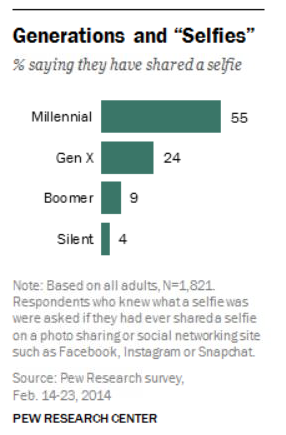A Cambrian Explosion In AI is Coming
Editor’s note: Dag Kittlaus is co-founder and CEO of Viv, which attempts to simplify the world by providing an intelligent interface to everything. Previously, he was co-founder and CEO of Siri.
You can call it a Virtual Personal Assistant, an Intelligent Agent, an Intelligent Interface or whatever you wish.
We Call It Inevitable..
The Missing Piece
The era of the assistant that began with Siri will eventually dominate the way people interact with mobile devices, computers, cars, wearables, appliances and every other piece of technology that requires complex human-machine interaction. Nearly all of the large Internet players have now launched or are working on some effort to win this next-generation paradigm and it’s the earliest of days.
Despite the massive uptake of assistants spurred by Apple’s Siri, Google Now, and Microsoft Cortana, the market and technologies for this paradigm remain in their adolescence. Siri was the first chapter in a much longer, larger story that reminds me of the original iPhone launch in 2007.
Both Siri’s launch and the original iPhone launch featured slick and intuitive new interfaces that improved upon the basic form and function of an already ubiquitous personal technology. Both set new bars for simplicity, and enhanced the way hundreds of millions of people interact with technology.
But only one of them quickly made the move to catalyze the creativity of the world and create an entirely new, multibillion-dollar ecosystem that continues to grow over half a decade later. The move of course was the opening up — the democratization of mobile applications to third parties, and the creation of the App Store.
That dynamic is precisely the missing piece of the puzzle that will transform today’s useful but limited versions of AI into a ubiquitous and everyday presence in our lives. A cambrian explosion is coming.
The Next Paradigm
Hollywood has been inspired by the simplicity of this paradigm for decades. However, today’s Web and app ecosystems haven’t changed substantially since their inception, offering too many options and too much manual work for a user to achieve a given task.
However, done properly, this emerging conversational paradigm enables a new fluidity for achieving tasks in the digital realm. Such an interface requires no user manual, makes short work of complex tasks via simple conversational commands and, once it gets to know you, makes obsolete many of the most tedious aspects of using the apps, sites and services of today. What if you didn’t have to: register and form-fill; continuously express your preferences; navigate new interfaces with every new app; and the biggest one of them all, discover and navigate each single-purpose app or service at a time?
Let Me Repeat the Last One
When you can use AI as a conduit, as an orchestrating mechanism to the world of information and services, you find yourself in a place where services don’t need to be discovered by an app store or search engine. It’s a new space where users will no longer be required to navigate each individual application or service to find and do what they want. Rather they move effortlessly from one need to the next with thousands of services competing and cooperating to accomplish their desires and tasks simply by expressing their desires. Just by asking.
Need a babysitter tomorrow night in a jam? Just ask your assistant to find one and it will immediately present you with a near complete set of personalized options: it already knows where you live, knows how many kids you have and their ages, knows which of the babysitting services has the highest reputation and which ones cover your geographic area. You didn’t need to search and discover a babysitting app, download it, register for it, enter your location and dates you are requesting and so on.
This is a far simpler world where your desires drive the ecosystem of services to action on your behalf. This paradigm becomes even more useful when you start to think about the emerging market for the Internet of Things, where many devices you will interact with require a completely eyes-free or hands-free interface. Commands replace controls and an entirely new OS for integrating disparate devices, services and experiences emerges.
The Ultimate Market
So as this described world of an “open” intelligent interface scales what does it ultimately manifest itself as? A massive marketplace.
Remember, this is a system that is orchestrating and serving up your goals and sub-tasks to thousands of services that compete and cooperate to accomplish things for you. And as a platform emerges that is capable of utilizing contextual signals, personal preferences and the simplest of interaction models, this becomes a magical combination that unlocks entirely new opportunities for participating services and applications. A hereto-unrealized commerce space I call the “referral economy.”
A great example of this is to imagine the opportunity presented to a whole range of services at the moment a user on a matchmaking service confirms a date. According to my friend and CEO of Match.com Sam Yagan, this happens roughly 50,000 times per day on his service alone. In today’s Internet, upon completing your date reservation, you may find a link that says, “send a gift” or some other relevant follow-on action. This immediately punches you out to a different service that shares a small cut of any business acquired via that link.
Of course, from a user’s perspective, this is not seamless because they need to start over and enter all of the contextual information still locked in the dating site. Such is todays typical affiliate program model… and it’s a sliver of what could have been from a revenue and usefulness standpoint.
At this contextual “just arranged a date” moment lies an opportunity to intelligently prompt if the user would like to see what is going on on friday night in the area, get tickets, book dinner reservations, send an Uber to pick them up or send flowers to the table. Incremental revenue nirvana.
Some improvements in this realm are coming in the form of things like “deep linking” and potentially Apple’s forthcoming “App extensions” which act like an IFTTT-like mechanism for linking a few simple capabilities or passing on some basic user credentials. These help but remain incremental scaffolding built on top of an aging infrastructure.
As AI reaches scale as a utility-like cloud service empowering developers and enterprises to create magical experiences, we may see a seismic shift of online advertising revenue away from search engine discovery marketplaces such as AdWords. This could lead to more of a consumption-based transaction model where certain types of brands big and small fight to be the best sources of full-service, programmatic data and services where the customer only pays when a user consumes their service. The programmable web finally arrives and the long rumored CPA (Cost Per Action) model goes mainstream.
The Ultimate Promise
The unlocking of AI ultimately allows this Cambrian Explosion to finally find the light of day and enables a dynamic new world to emerge. As your trusted assistant becomes more and more capable as thousands of developers join the marketplace, it brings scale and breadth to something that AI has aspired to for decades. It scales usefulness.
Growth in Healthcare Startups
No Faith. No Country. No Marriage. Still, Millennials Are Optimistic
Millennials don’t seem to take comfort in the same things as their elders do. A new study from the Pew Research Center called Millennials in Adulthood finds that far fewer of them identify with a religion or a political party. They’re less likely to be married than previous generations were at the same age. Only half call themselves patriotic, and a scant 1 in 5 thinks that most people can be trusted. Just a handful expect that Social Security will pay in full when they need it.
Is alienation from these most traditional pillars of society getting them down? Not in the least. Millennials are more likely than their elders to believe that the nation’s best days are ahead of it and to trust that they’ll have enough money to lead the lives they want.
What’s going on here? One factor, apparently, is that millennials, currently 18 to 33 years old, find satisfaction in entirely new sources. Their digital lives are hugely important to them, for example. So they may be less alienated than they appear—they just live in different kinds of communities.

Another reason for millennials’ optimism is undoubtedly what Pew calls “the timeless confidence of youth.” After all, Pew notes, Gen X was equally confident when it was younger. Gen X’s positive outlook has receded. Maybe millennials’ will, too.
STORY: Why Negativity Is Really Awesome
That said, there’s something different about young adults’ confidence today. In 1974 a Gallup survey found that the young felt less secure than the old. Only about half of adults under the age of 30 said they had “quite a lot” of confidence in America’s future, compared with 7 in 10 of those 30 or older. Today, the reverse is true. Pew found that almost half of millennials think the country’s best days are ahead of it, vs. fewer—42 percent of Gen Xers, 44 percent of boomers, and 39 percent of the Silent Generation—of their elders.
Sharing is the New Buying: How to Win in the Collaborative Economy
Caterham Carbon E-Bike
Inspiration and materials from Caterham’s exciting Formula One project have found their home in a radical machine which excites on levels of style, design and character. This exotic combination and the use of advanced techniques, allied with the creativity of Alessandro Tartarini has combined with Caterham’s unique DNA to lead to the creation of an electric vehicle with a bold, futuristic look, but one with adaptable ergonomics and safety to the fore.
At the heart of the Carbon E-Bike is a 36-Volt, 250 Watt brushless motor, feeding its power through an eight-speed Shimano Nexus gear hub, with every gear ratio tuned for optimum acceleration.
The chassis is a work of art: featuring a Modular carbon-aluminum frame, in which three different frame sizes and flexible ergonomics technology means that the Caterham Carbon E-Bike will be uniquely adaptable to the size and shape of each rider. Carbon girder forks will keep the front-wheel where it needs to be – tracking true – while the mono-shocked rear-end ensures efficient delivery of the power to the Tarmac while all the time giving a compliant, plush ride.
Continuing the hi-tech theme, the LED dashboard will supply all the information the rider needs, with battery status display, speedometer, trip meter and battery range indicator. The wheels used on the Carbon E-Bike feature lightweight but strong aluminum rims, laced with stainless steel spokes. Attached to the wheels, the braking system is similarly robust, featuring modern disc brakes front and rear. Tires will also be performance-based, with wide, fat tires, impregnated with carbon-fibre for strength and integrity.
The result is a stunningly modern motorcycle with zero emissions but with a full fun quota as standard and with Caterham’s performance-based DNA coursing through its veins.
Source: Caterham Bikes Press
You Don’t Want to Think of a Startup as a Big Company
Once you’ve heard the insight–that Startups are different from big companies–it seems so obvious
Yet too often entrepreneurs, and those that teach them, approach the building of new companies with the same goals, staff structures and assumptions that motivate the management of large companies. Startup founders build teams to focus on engineering, and on the process of bringing a product or service to market. However, it is important to understand that startups really begin in search mode, not execution mode. All businesses, not just startups, are now in uncharted territory and the distinction is crucial, it can vitally inform the activities of startups and their teams. The process, in the beginning, is one of customer discovery and a search for the right business model. The EM startup team is analyzing product-market fit. Do customers actually want the product or service you have in mind? Do they want it with the features and functionality you have in mind, or do they want something different? This process of customer discovery requires a different mindset on the part of the team, and a view of their roles that stress flexibility, an ability to shift gears, and a contribution to learning. As this process unfolds, it is important for founders to consider whether they’d like to grow with their startup (that is, grow their skills that position them to guide the build and execution phase) and how they can assemble the right team to join them.  The Entreprise model has been developed to help founders tackle the early-stage challenges of a startup company, with a view to create a thriving agile company that meets a strong market need with the best possible product and service. Today there are crucial topics to consider when building a startup. First, what exactly is a startup? What do we know about its goals and why is that knowledge important? And, how are startups different from big companies? The EM provides an introduction to the lean flexible method, and elaborates on how founders who seek early contact with customers gain insights that are invaluable in the vital development stages of a Startup. Entreprise Matrix offers suggestions for how a founder can gain skills and knowledge that will allow him/her to stay with the company through the build, execution and expansion phases. Finally, one of the most challenging questions an entrepreneur may face: how do you figure out if the path you’re on is the right one? In the coming months we’ll feature a series that explores the process of lean development in greater depth: watch for this series entitled “The Cooperative Collaborative Approach”.
The Entreprise model has been developed to help founders tackle the early-stage challenges of a startup company, with a view to create a thriving agile company that meets a strong market need with the best possible product and service. Today there are crucial topics to consider when building a startup. First, what exactly is a startup? What do we know about its goals and why is that knowledge important? And, how are startups different from big companies? The EM provides an introduction to the lean flexible method, and elaborates on how founders who seek early contact with customers gain insights that are invaluable in the vital development stages of a Startup. Entreprise Matrix offers suggestions for how a founder can gain skills and knowledge that will allow him/her to stay with the company through the build, execution and expansion phases. Finally, one of the most challenging questions an entrepreneur may face: how do you figure out if the path you’re on is the right one? In the coming months we’ll feature a series that explores the process of lean development in greater depth: watch for this series entitled “The Cooperative Collaborative Approach”.  Learn how you should think about the goals of your startup and the role you play within it. Understand the basics of the lean collaborative method, and learn how you can grow your startup and how you can have the support to make the difficult decisions about whether and how to proceed once you’ve gained those critical customer insights. Finally, ask yourself the pivotal impact question: How can what I’m learning today change what I do tomorrow?
Learn how you should think about the goals of your startup and the role you play within it. Understand the basics of the lean collaborative method, and learn how you can grow your startup and how you can have the support to make the difficult decisions about whether and how to proceed once you’ve gained those critical customer insights. Finally, ask yourself the pivotal impact question: How can what I’m learning today change what I do tomorrow?
Survey: 63% of 20-Somethings Want to Start a Business
BY Minda Zetlin
And With the Right Perspective and Skills, They Just Might Make It
If you’re under 30 years old, you probably want to run your own business. That’s the finding of a recent University of Phoenix survey. In the 1,600 adults surveyed, 63 percent of people in their 20s either owned their own businesses or wanted to someday, and of those who were not already entrepreneurs, 55 percent hoped to be in the future. And while the urge to be your own boss isn’t confined to the young, people under 30 have more of an entrepreneurial itch than their older counterparts.
In the survey, the older the respondent, the lower the likelihood that he or she had entrepreneurial ambitions. Only 26 percent of those over 60 not already running their own businesses had any desire to do so. Why are the young people so eager to strike out on their own?
For one thing, entrepreneurship may simply be more feasible for 20-somethings who don’t yet have children or mortgages, who may still have parents who can offer economic assistance, and who have the energy to handle a startup’s grueling hours.
But there’s another important reason: They’ve seen the lure of Startup Culture.
“Younger people are more inclined to want to be entrepreneurs because of their exposure to leadership training and technology–which is now ruling the world,” says Sam Sanders, Ph.D., and chair of the School of Business at the University of Phoenix. “That gives them that hunger to go out there.”
Role models like Mark Zuckerberg have demonstrated that you don’t need to spend decades toiling at someone else’s company and learning an industry before you can become a success in your own right.
“Many young people want to start a business right away as opposed to paying their dues,” Sanders adds. As Paul Graham recently observed, creating a Startup is becoming a socially accepted alternative to getting a job or going to grad school after college.
But are these young entrepreneurs ready for prime time?
In many ways, yes, Sanders says. For instance, if you’re a 20-something entrepreneur, you may have a better sense than your older peers of how to use social media to promote and grow your business.
But before you strike out on your own, make sure you have these additional elements squared away:
Learn Your Industry
“Young people need to conduct market research in terms of knowing who their competitors are and what the business landscape is,” Sanders says. “They have to identify a target audience and what motivates that audience to act.”
One mistake he sees young entrepreneurs make is to build a new business around themselves rather than their customers, he adds.
“Let’s say I’ve been getting compliments on my cupcakes so I decide to start a bakery. I find a great place to set up that’s near where I live, but I don’t examine the market and find out that there’s another bakery near that location, or how well it’s doing. I set up where it’s convenient to me, rather than where the need is.”
Form a Strategy
You may not need a formal business plan, but it’s important to have a strategy and a good idea of where you’re going, Sanders says, adding that training such as an MBA is one good way to get there.
“You need to know what goes into starting a business from the financial side and human capital side. You need to understand external factors that you can’t control, such as government regulation, and internal factors that you can control such as your company’s culture. You need to research the funding options available.”
It’s essential to have thought these things through, he adds. “Businesses that don’t have a strategic plan tend to go out of business.”
Get the Right People On Board
“You should learn from a mentor while you’re developing your business,” Sanders advises. “Someone who’s been successful, or even someone who’s been unsuccessful will have a lot to teach you.”
Many young entrepreneurs make the mistake of hiring their friends, he adds.
“Your buddies may not have the skill set to make you successful. You need a management structure than can support your success–and that’s poised for growth.”
Think Entreprise Matrix – It’s Time . .
From <http://www.inc.com/minda-zetlin/63-percent-of-20-somethings-want-to-own-a-business.html?cid=sf01001>
SolarCity to Back Up Solar with Tesla Batteries
By JONATHAN FAHEY
NEW YORK (AP) — The solar panel installer SolarCity is beginning to address one of solar power’s big drawbacks: The sun doesn’t always shine.

The solution: big battery packs that will provide backup power while lowering electric bills.
“Our goal is to be an energy provider, to provide all energy services,” said SolarCity CEO Lyndon Rive.The supplier: electric car maker Tesla Motors, whose CEO Elon Musk is also the chairman of SolarCity.
The batteries will be offered first to commercial customers because of the way many commercial electric bills are calculated. SolarCity is also conducting a pilot program in California for homeowners, but because residential bills are calculated differently — and the batteries are so expensive — it could be years before batteries make financial sense for homes.
“We know this is a long-term problem, so we are investing in it now,” Rive said.
SolarCity shares rose $2.83, or 5.4 percent, to $55 in trading before the opening bell.
For power-hungry businesses battery backup can make financial sense even now. Many businesses are charged not just for the amount of electricity they use over a certain period, but also for the level of electricity they need from the grid at any one time. Think of a car owner paying for gasoline to run the engine, but also for the amount of horsepower needed when the car is loaded with people and climbing a steep hill.
Often, those horsepower charges, known in the electric industry as “demand charges” ratchet up quickly.
SolarCity’s solar panels can lower those demand peaks when the sun is shining. SolarCity’s battery packs will make sure those peaks stay low when the sun is not shining or the customer needs a little extra juice. The company says the battery systems will lower demand charges by 20 percent.
A secondary benefit: If power goes out, the battery will be able to run critical systems for several hours — or for several days if it is sunny enough for the battery to recharge with solar electricity during the day.
For traditional electric utilities already struggling with weak electricity sales, this represents yet another threat. Efficiency programs and more advanced appliances are already helping customers lower their energy use, and solar panels and other power sources are helping customers generate their own power. Now commercial customers may have a way to reduce demand charges, too.
Other companies offer similar programs to businesses, whether they have solar or not, like Stem, based in Millbrae, Calif. The company this week announced an investment from General Electric and the Spanish renewable energy company Iberdrola.
The batteries offered by SolarCity are the same lithium-ion ones that power Tesla’s electric vehicles, reconfigured for stationary use. SolarCity’s chairman is Elon Musk, founder and CEO of Tesla Motors. Musk is a cousin of the founders of SolarCity, CEO Lyndon Rive and chief technology officer Peter Rive.
Two Tesla vehicles have caught fire in recent weeks after road debris punctured battery packs. The Tesla batteries for solar backup will be enclosed in steel cases — and they won’t be traveling down littered highways at 65 miles per hour. “The battery is extremely safe,” Rive said.
The battery systems are also extremely expensive. SolarCity won’t say exactly how expensive, but industry insiders put the cost at near $1,000 per kilowatt-hour, which would make typical commercial system well over $100,000.
SolarCity won’t charge customers for the battery, but will instead offer it as a service for a monthly fee. They will be offered first in markets with high demand charges, such as parts of California, Massachusetts and Connecticut.
A home battery pack would cost in the range of $25,000 — about as much as the solar panel system itself. And because homeowners don’t pay demand charges there isn’t an economic way — yet — for the battery to recoup that cost. That could change if battery prices fall sharply, but they have remained stubbornly high despite years of research and development.
Jonathan Fahey can be reached at http://twitter.com/JonathanFahey.
This Is, Quite Simply, The Biggest Endorsement That Bitcoin Has Ever Received
“We believe Bitcoin can become a major means of payment for eCommerce and may emerge as a serious competitor to traditional money transfer providers. As a medium of exchange, Bitcoin has clear potential for growth, in our view.”
That quote is from David Woo, FX and Rates Strategist at Bank of America/Merill Lynch.
Woo is one of the most genuinely brilliant minds on Wall Street, and that statement is huge.
Here’s why: Lots of folks have made positive noises about Bitcoin. Ben Bernanke, for example, said it “may hold long-term promise” but mostly spoke very generally about being open-minded toward digital currencies. He never said anything specific.
Various hedge fund managers have made positive statements about Bitcoin, but you have to take their comments with a grain of salt. Most of them aren’t experts in economics, and just get excited by things that go up or down by a lot (which obviously Bitcoin does in spades).
But Woo’s analysis represents a top-flight mind at a major financial institution assessing it in a serious way, and coming to the conclusion that it could be the real deal.
Woo even identifies the three things that need to happen for Bitcoin to be worth what it currently is:
Our fair value analysis suggests that to justify the current Bitcoin valuation, it will need to (1) account for at least 10% of all global e-commerce B2C transactions, (2) become one of the top three players in the money transfer industry, and (3) acquire a store of value reputation close to silver.
Bitcoin is lodging into people’s minds, and not just as some theoretical amusement that might one day be meaningful, but as something that can be defined and judged against benchmarks. As such, Woo’s note represents the biggest endorsement of Bitcoin to date.
Bank of America David Woo
From <http://finance.yahoo.com/news/quite-simply-biggest-endorsement-bitcoin-153805744.html>
The Future of Media
A New Architecture
The human eye has tremendous capabilities, but it is limited in its ability to focus on objects placed very near the eye. This inability to focus on near objects has lead traditional near-eye display developers to develop complex optical solutions that make the so-called near-to-eye image source appear to be located further away than it actually is and comparable to a typical television or small monitor. Innovega has developed an alternative display architecture that is based on enhancing the human eye’s normal vision capabilities. It improves sharpness of vision in one’s real-world while enabling the wearer to view extreme detail of objects placed very near to the eye and specifically at the usual distance between traditional eyewear and the eye. In this way the wearer is able to simultaneously focus on virtual content from the eyewear and on the entire spectrum of activities in the real-world. This new iOptik approach leverages the mature technology used by contact lens suppliers and eliminates the usual bulky optics that have previously been required in the design of video eyewear products.

The ability to focus the near-eye image is achieved by embedding optical elements inside the iOptik™ contact lens. These micro-components are so small that they do not interfere with the wearer’s normal vision.
The iOptik™ contact lens enhances vision and enables consumers to better visualize their digital world. It allows light from the display to pass through the center of the pupil, and light from the surrounding environment to pass through the outer portion of the pupil. Each of these sets of light rays produces an image on the retina simultaneously with the other set. They are superimposed to form a single integrated image.

Display light passes through the small central optic which, in combination with the eye’s normal optics, focuses the display light onto the retina. The display light that falls on the outer portion of the contact lens is blocked by the outer filter to prevent it from interfering with the view of the display.
Ambient light from the environment is able to pass through the outer filter. This light enters the pupil and is focused onto the retina. Almost half of all consumers benefit from a lens prescription so this is incorporated into the lens. Light from the environment that passes through the center focusing optic is first defocused and is then blocked by the center filter preventing this defocused light from interfering with the wearer’s normal view of the surroundings.

Innovega and its partners will give applications designers the opportunity to exploit consumers’ simultaneous and in-focus views of their surroundings and of virtual worlds. The Innovega Technology video below demonstrates how the iOptik contact lens properly focuses the ambient and distant scene but simultaneously creates a 2nd in-focus image from the flat-panel screen that is wrapped into the eyewear.






